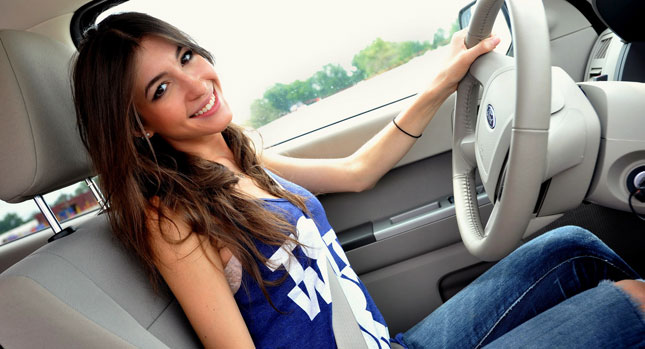Where I grew up, few youngsters seemed to wait to come of age (in the government’s view) before trying out their skills behind the wheel. There were plenty of deserted roads through forests and fields where this could be accomplished in relative safety (and unbeknownst to the authorities).
By the time most were allowed to get into the driver’s seat of an actual car, the basics were no longer a mystery and whatever was still problematic would eventually be ironed out by the driving instructor’s professional guidelines, coupled with his or her experience on the job (a very important aspect when choosing who will teach you to drive).
Still, conditions around the world are varied, and not all are fortunate enough to have large networks of mostly empty dirt roads to practice on, and their first contact with driving is through an instructor, in a parking lot full of cones, instead of being with a trusted friend/parent/relative in a car you’ve been in before.
However, if you don’t take the time to learn some of the skills before you start driving school, and have at least some first-hand experience in driving, you will end up a shaky insecure mess, hogging the middle lane, driving 5 mph under the speed limit, fearing cops, traffic, road rage and your own car.
All of the above was written in correlation with a recent report from USA Today, which suggests that the best cars for teen drivers are “big, slow and ugly.” The argument is that if the car doesn’t instigate sportiness in any way, and is big and slow to respond, it is therefore inherently safer, a fact which is somewhat true. However, it shouldn’t be called a rule, because you can do a burnout even in the most basic looking, floaty and underpowered 1990s Buick, by propping one front wheel into a high curb which it couldn’t climb and flooring it.
The idea is that the car isn’t really important, and the fact it is suggested that an unattractive car is better than an attractive sporty one for young buyers is simply sweeping the problem of bad teen driving under the rug. Furthermore, as Jeremy Clarkson proved in an episode of Top Gear from the mid-1990s, a faster, sportier car is safer than a bigger and slower one, because it is engineered with high speed maneuvering in mind – its limits are much harder to reach, and therefore it is harder to crash (sporty cars have better-than-average brakes too, also an important safety-enhancing factor).
That’s not to say the report doesn’t have plenty of validity when it comes to recommending the best safety features to look for in a teen driver’s first car. For instance, stability control, side airbags and collision warning or mitigation are definitely features to look out for, yet “big”, “slow” and “ugly” are not, in my view, for the reasons mentioned above. Besides, the modern smartphone-ized youngster wouldn’t be caught dead in mid 2000s Oldsmobile with suspension behavior akin to that of a water bed.
Besides, at a certain age, one should take responsibility for his or her actions, and not keep having to rely on parents’ gentle nudge through life or on laws written by old men who have never met you and have no idea what you are like, and what your specific individual requirements may be. Driving is a serious matter, and should be treated as such, but why not educate young drivers more, let them have fun on a skidpad, do burnouts and understand what understeer and oversteer are, and how electronics will help them out, so that you don’t then impose silly rules on them, charge them extra for insurance (age discrimination)?
Aside from all of the safety features previously mentioned, there is one more that should be featured on more cars, and would really help overly-protective parents have an easier time. I think that systems like Ford’s MyKey are really helpful, because you can limit a car’s maximum speed to whatever you want, regardless if that car can do 200 mph – that will only make it even safer at 30 mph.
By Andrei Nedelea
Note: Photos from Ford’s Driving Skills for Life teen safe driving program
PHOTO GALLERY



























